what do i need to make popcorn in a popcorn machine
Popcorn is an easy manner to boost impulse sales at your concession stand, movie theater, or convenience store. Considering of its low costs for both supply and labor, this succulent, time-honored snack food offers 1 of the highest turn a profit returns in the concession foods industry! Choosing the right kernels, seasonings, and popcorn poppers are all important considerations for the success of your business.
Types of Popcorn Kernels
In that location are ii types of popcorn kernels: butterfly popcorn, which is also sometimes referred to as snowflake popcorn, and mushroom popcorn. Each kernel type yields popcorn that is unique in structure, which gives each a 'best' apply.
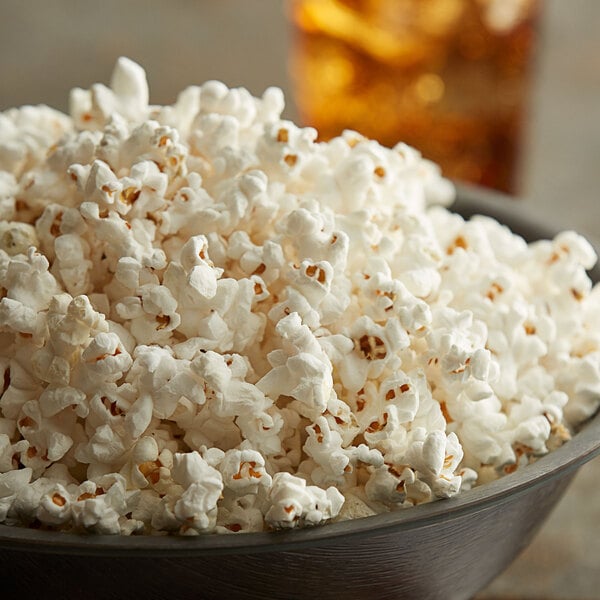
Butterfly / Snowflake Popcorn:
- Irregular shapes with light, fragile "wings" protruding from all sides.
- More tender, light, and fluffy than mushroom kernels. Information technology'south best served fresh for maximum crunch!
- Most often used in movie theaters, stadiums, and carnivals.
- Not-compatible shape allows y'all to fill serving sizes with less product to maximize profits.
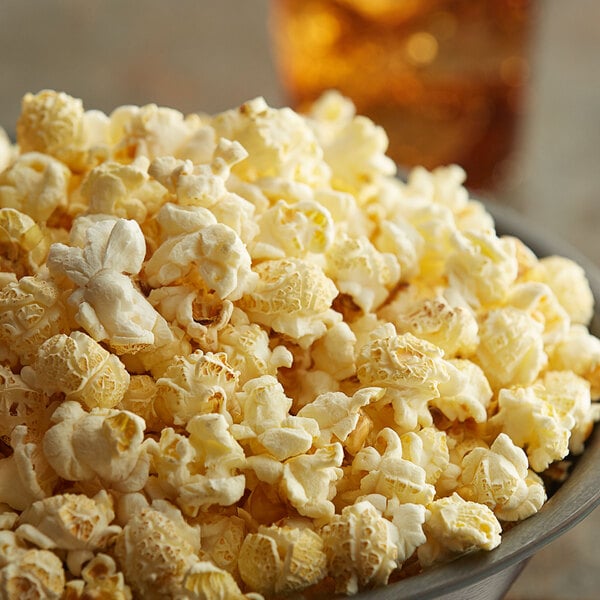
Mushroom Popcorn:
- Meaty, ball shape.
- Larger, denser, and less fragile than butterfly popcorn.
- Circular shape and larger surface surface area holds up well confronting stirring and coating processes.
- Ideal for gourmet popping applications where caramel, cheese, chocolate, and other coatings or glazes are applied.
- Popcorn of option for making kettle corn.
Popcorn Terminology
When buying popcorn for a popcorn motorcar, you volition sometimes run into these terms used. Learn what they mean so yous tin can make sure you're buying the best popcorn for your business organization!
- Expansion Rate: The expansion rate measures the number of popped popcorn servings produced from a specific corporeality of unpopped kernels. For example, 1 cup of popcorn kernels with an expansion rate of 38 will yield 38 cups of popped popcorn. An expansion rate betwixt 35-40 is considered to exist good quality - the higher the expansion rate is, the greater the book of popped corn.
- Moisture Content: To ensure maximum popping efficiency, it is best to strive for kernels with a moisture content somewhere between 13% to xiv.5%. While popcorn with a lower moisture content may not pop to its fullest potential and yield some unpopped kernels, popcorn with a higher moisture content may yield a chewy product and limit its expansion rate.
- Kernel Size: Kernel size is measured in K/ten g (kernels per x grams). To find the kernel size of popcorn, 10 grams of popcorn are measured and the number of kernels is counted. The greater the number of kernels, the smaller the kernel size. Kernel size simply refers to the size - it does non straight influence how the popcorn expands.
Types of Popcorn Kernel Colors
Each kernel color pops differently, resulting in a subtle difference in size, texture, and color.
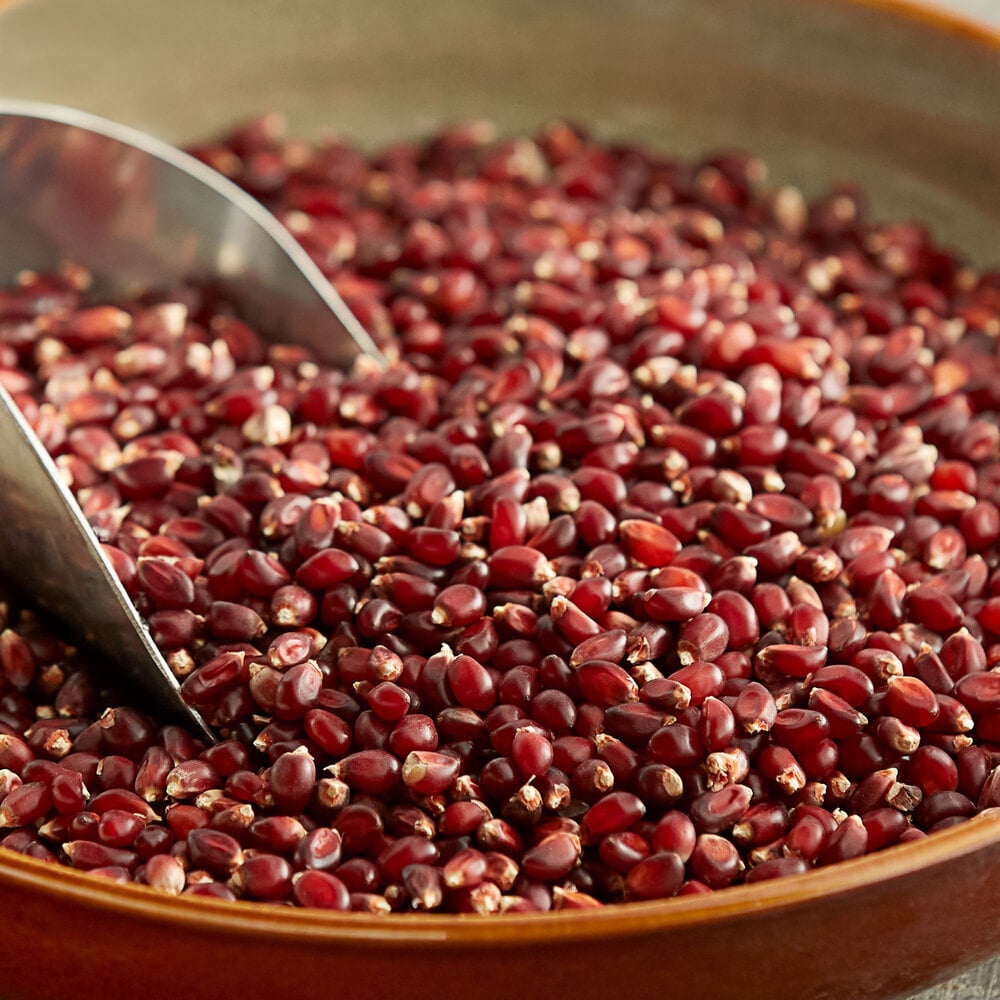
Red Popcorn Kernels:
Pops white and a footling smaller than the other varieties. Offers a light, tender bit with a slightly nutty season.

Blue Popcorn Kernels:
Pops similar to red variety. Offers a light, tender fleck with a unique, nutty season.
How to Store Popcorn Kernels
It is best to store kernels in a sealed container at room temperature to block out humidity and maintain a constant moisture content. Storing popcorn kernels in a hot, humid environment can increment moisture content and potentially crusade mold, while storing them in a cold, dry environment (such every bit a refrigerator) can decrease the wet content and leave y'all with unpoppable kernels.
What is the Best Oil for Popcorn?
When choosing a cooking oil for your popcorn, it is important to consider the fume point of the oil. The fume point refers to the temperature at which an oil breaks downwards and ceases to be useful. Some oils are not able to handle the rut from your kettle, which may finish upwards burning and fifty-fifty changing the nutritional content of your popcorn. Another bespeak to consider is the taste. Some oils do not impact popcorn's natural taste, while others may lend a richer flavor.
Coconut oil and canola oil are among the nearly popular
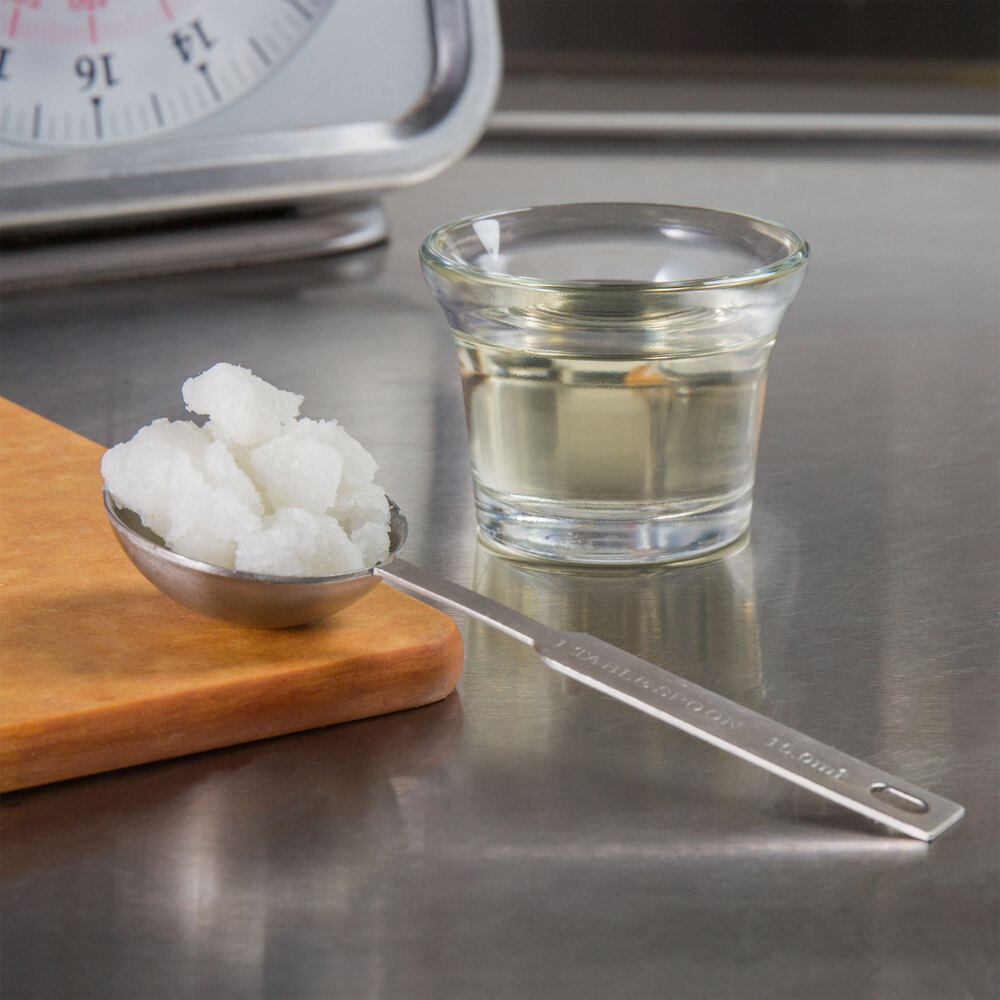

Kokosnoot Oil
Pros
- Well-nigh popular oil blazon for movie theater style popcorn.
- Refined kokosnoot oil has a smoke signal of 350-450 degrees Fahrenheit that will withstand a kettle's high heat.
- Refined coconut oil has a neutral flavor and odor.
- High in natural saturated fats that can encourage fat-called-for and may help reduce the hazard of eye disease adventure.
Cons
- Tin can affect the flavor of seasonings if too much refined coconut oil is used.
- Unrefined, or virgin, coconut oil has a lower smoke point (350 degrees Fahrenheit) that may not exist able to handle the kettle's high temperature.
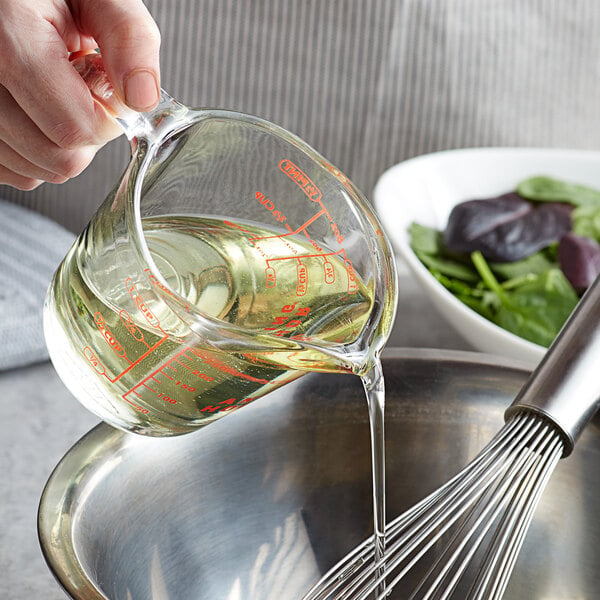

Canola Oil
Pros
- Smoke betoken of 400-475 degrees Fahrenheit will withstand a kettle's high heat.
- High monounsaturated fat to saturated fat ratio.
- Upkeep-friendly selection.
- Features a clean, mild flavor and scent.
Cons
- Many contain GMO ingredients.
- High in linoleic acid, which may crusade inflammation when consumed in excess.
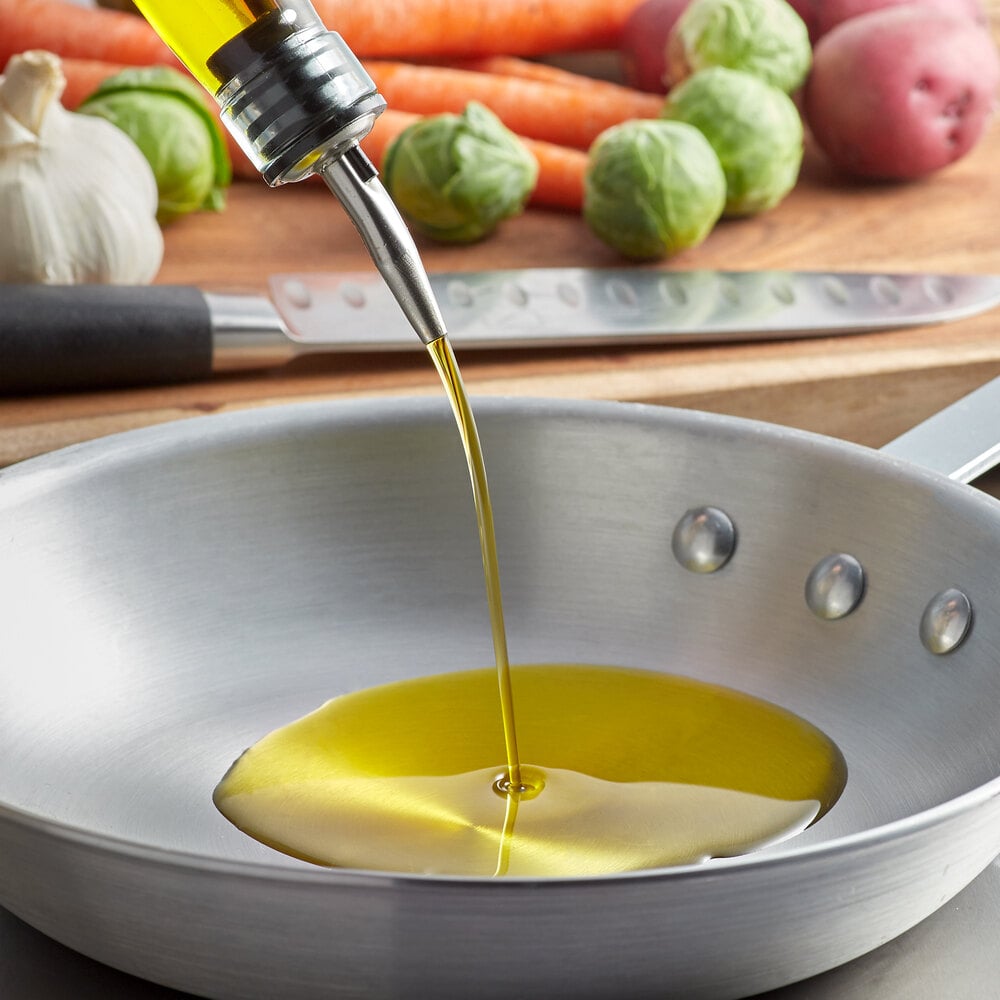

Sunflower Oil
Pros
- Smoke point of 450 degrees Fahrenheit will withstand a kettle'due south loftier heat.
- Features a neutral flavour and olfactory property.
- Contains many vitamins including D, A, K, and E.
Cons
- Loftier in linoleic acrid, which may crusade inflammation when consumed in excess.


Avocado Oil
Pros
- Smoke bespeak of 520 degrees Fahrenheit will withstand a kettle's high heat.
- Refined avocado oil features a clean, neutral flavour and odor, while unrefined features a mild, slightly nutty and buttery flavor.
- Rich in antioxidants and healthy fats, making it a neat option for witting-consumers.
Cons
- Typically a more than expensive choice.
Types of Popcorn Supplies
At that place are a variety of popcorn supplies that brand is easy to offer sweet or savory flavors to patrons, or that help take the guesswork out of making and serving popcorn!

Popcorn Buckets / Numberless
Corking for professionally merchandising popcorn and providing customers with various popcorn portion sizes.
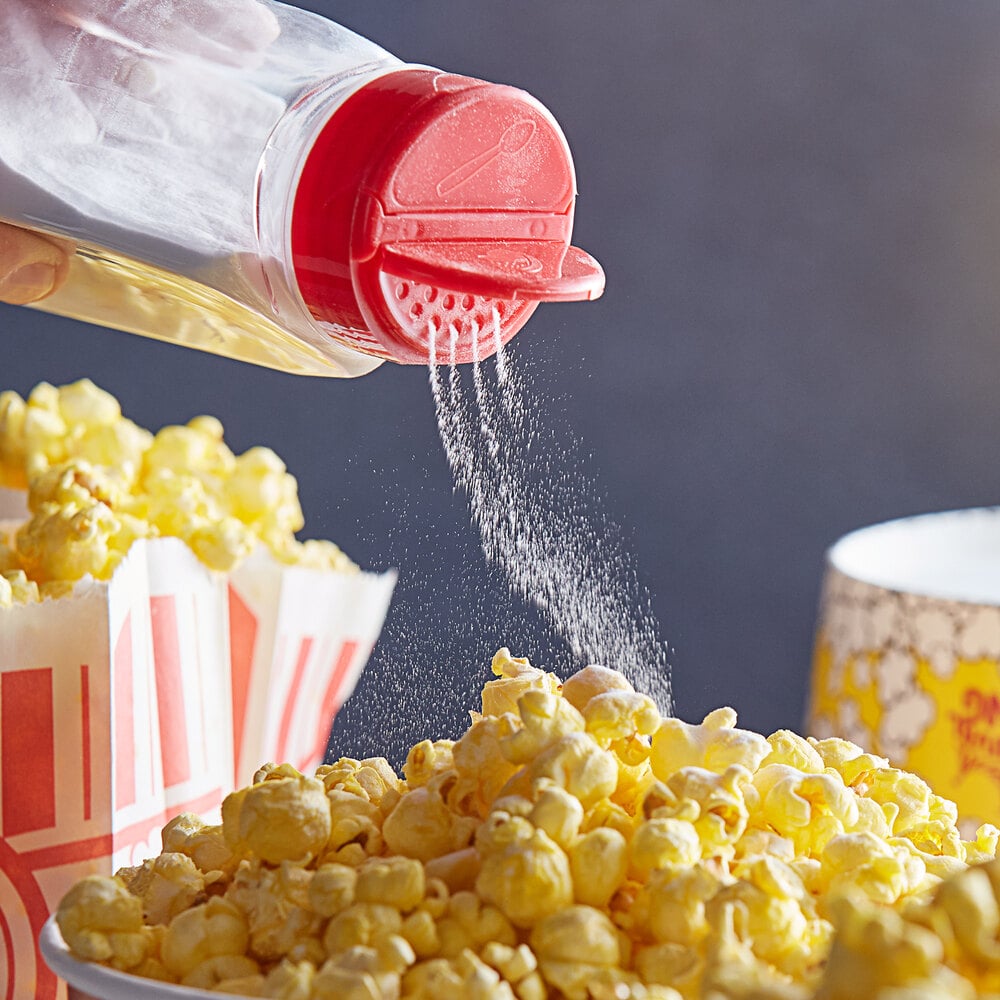
Popcorn Salt
A super-fine table salt designed to attach to popcorn and subtly enhance its flavor.

Popcorn Glazes
Makes it like shooting fish in a barrel to offer flavored popcorn with minimal effort.
Anatomy of a Popcorn Machine
Commercial popcorn machines make the popcorn kernel explode, or "popular." Each kernel consists of water and starch that is curtained inside of the hull, and when the kernel heats upwards, the water expands and pressure builds up within the hull. The pressure will eventually create that unmistakable "pop" every bit the hull gives mode to inflated starch that turns the kernel inside out. Popcorn machines allow the steam to escape during the popping cycle, which prevents the popcorn from condign soggy.
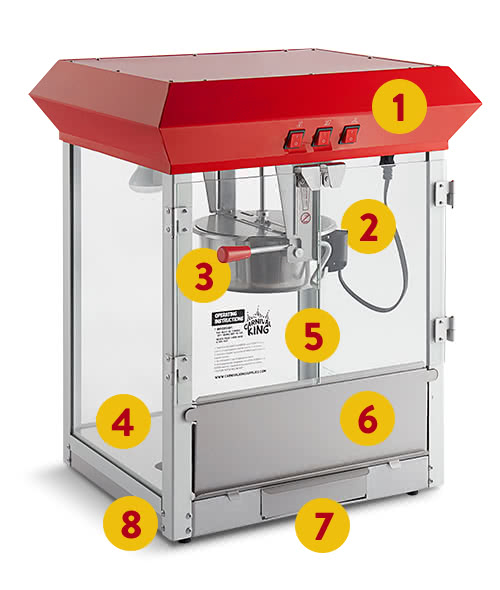
- Operating switches: quality units will include iii switches for heat, which controls the turner, a merchandising light, and a motor/stirrer switch to initiate the popping.
- Kettle: heats the oil and kernels to brand popcorn. Look for removable, stainless steel kettles for piece of cake cleaning.
- Roller bar: turns the kettle to completely empty the contents of the pot and helps increase employee safety.
- Warming deck: keeps the popcorn warm and fresh.
- Door: provides easy admission to the kettle and inside cabinet for convenient cleaning.
- Drop door: makes information technology easy to scoop popcorn without opening the unit's entire door.
- Kernel tray: allows for the removal of unpopped kernels, which have fallen through a perforated warming deck.
- Feet: non-slip rubber feet provide additional stability for countertop models.
How to Choose the All-time Popcorn Machine
Some things to consider when purchasing the best popcorn machine for your needs are:
Kettle Fabric


Pros
- Heat upward speedily and evenly to prevent hot spots and burning.
- Provide a more economical alternative to stainless steel.
Cons
- Not as durable equally stainless steel.
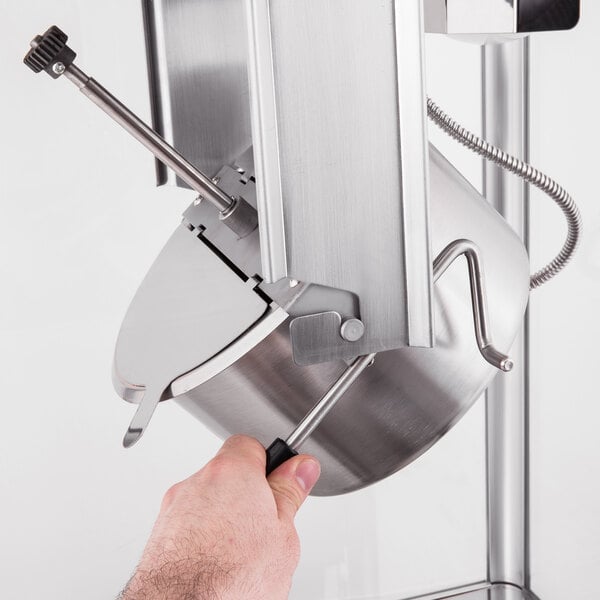

Pros
- Are extremely durable, long-lasting, and easy to clean.
- Are non-reactive.
Cons
- Take a longer fourth dimension to heat upward than aluminum.
Kettle Book
You lot will too need to determine how much popcorn you lot are looking to make each twenty-four hours to then determine the kettle size y'all need.
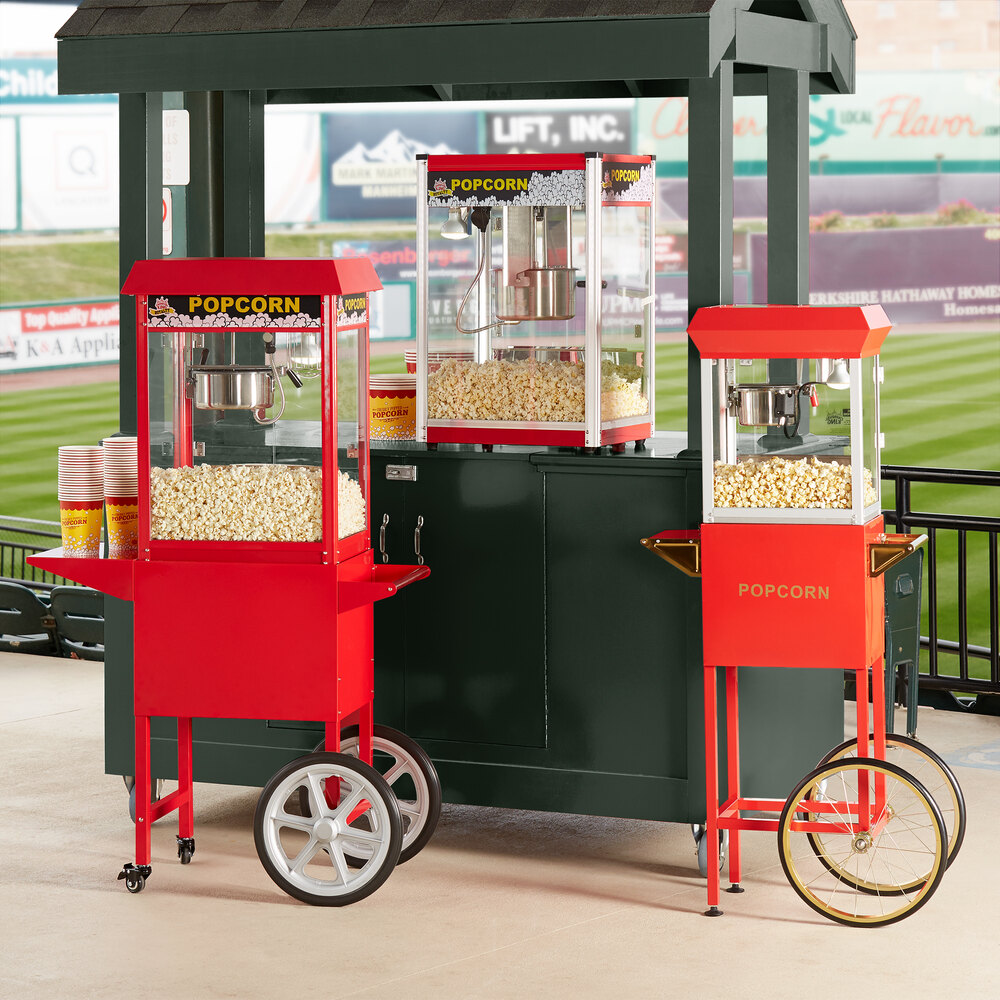
- Low volume commercial poppers accept kettles with capacities between 4 to viii ounces. These are ideal for catering parties, offices, and fundraising events.
- Medium book commercial poppers have kettles with capacities between 12 to 14 ounces. These are ideal for some movie theaters, convenience and retail stores, and fundraising events.
- High volume commercial poppers have kettles with capacities between xvi to twenty ounces. These are ideal for flick theaters, convention centers, arenas, and amusement parks.

To entice customers and farther increment impulse sales at special events and parties, consider using vintage popcorn carts and display stands to add nostalgic charm to your snack service! They are also bully for locations with limited counter space.
How to Apply a Popcorn Machine
Popcorn machines are easy to use - requiring only a few simple switches to operate and only two ingredients, these user-friendly machines brand it a breeze to whip up batches of hot, fresh popcorn!
- Plow the heat and light switch to ON.
- Add together oil and permit estrus for iii-4 minutes. How much oil for the popcorn machine tin can be determined by using a ratio of 1 function oil per 3 parts popcorn kernel.
- Once the oil is heated, turn on the motor switch and add the popcorn kernels.
- In one case the popping has completed, turn off the motor and heat switches. Carefully dump popcorn from the kettle past turning the roller bar. It is recommended to apply an oven mitt or protective glove when dumping the popcorn as the kettle's surface will exist very hot.
- At this point, just the light should be switched to ON. This will continue your popcorn warm and dry out until information technology is served.
- If more butter or seasoning is desired, complete this step outside of the main unit in a dissever bowl or container.
Important Safety Precautions:
- When finished, be certain to unplug the motorcar from its power supply.
- Always apply oil when popping kernels; never operate with a dry kettle pot.
- Once you are finished popping and the unit has cooled, clean your popcorn machine to forbid grease build-upwards and protect the longevity of your car.
How to Use a Carnival King Popcorn Popper
This video from the Carnival Rex make demonstrates just how like shooting fish in a barrel information technology tin be to install and operate a popcorn machine of your own!
How Profitable is Popcorn?
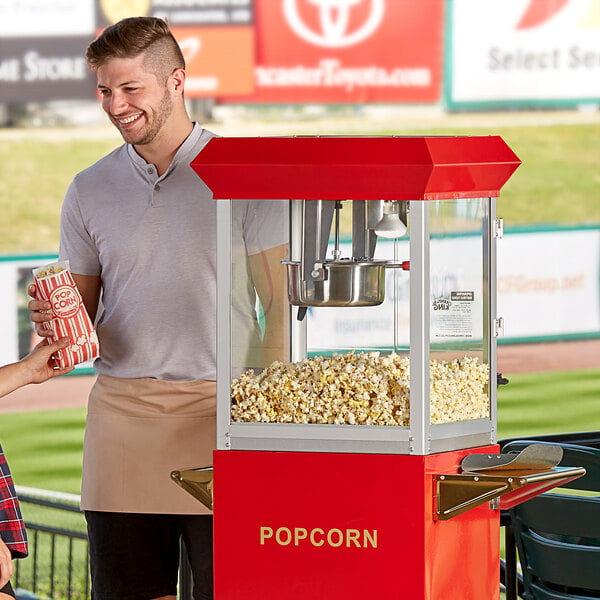
Americans consume 17 billion quarts of popped popcorn each year. The boilerplate American eats almost 58 quarts. So just how profitable is popcorn? Here are some statistics to give y'all an idea:
- A small-scale order of popcorn costs about $0.22 in nutrient costs and sells for almost $1.25, giving you a profit margin of 87%.
- A medium order of popcorn costs about $0.37 in food costs and sells for almost $1.85, giving you a turn a profit margin of 80%.
- A big gild of popcorn costs nearly $0.53 in food costs and sells for about $2.75, giving you a profit margin of 81%.
Enter your estimates in each field of our Popcorn Food Cost Computer and encounter how much money yous can make over the course of one year. You lot might be surprised!
Source: https://www.webstaurantstore.com/guide/517/types-of-popcorn-and-popcorn-machines.html
Post a Comment for "what do i need to make popcorn in a popcorn machine"